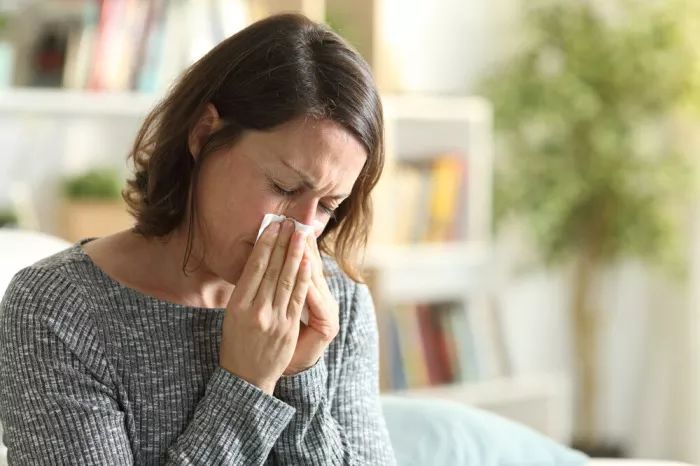On May 8, 2025, in Amsterdam, a new European Alcohol Health Alliance was officially launched with the goal of reducing the unsustainable harm caused by alcohol consumption in the region. The World Health Organization’s European Region remains the area with the highest alcohol consumption worldwide, where alcohol significantly shortens life expectancy, especially among men. Every hour, alcohol is responsible for more than 80 deaths in Europe, totaling approximately 800,000 fatalities annually.
Alcohol is a leading risk factor for disability, contributing to over 200 chronic diseases, and is a major cause of numerous injuries and mental health disorders. Beyond the health consequences, alcohol also plays a key role in crime and other social harms.
The newly formed alliance, composed of health organizations and experts, seeks to amplify the voice of the medical community in policymaking. Announced at the 2025 European Association for the Study of the Liver (EASL) conference in the Netherlands, the alliance aims to reduce alcohol-related disease, injury, and death, raise public awareness, and advocate for effective, life-saving policies.
Highlighting Alcohol’s Hidden Harms
“Alcohol is linked to over 200 health conditions, ranging from liver cirrhosis to cancer and cardiovascular diseases, yet its dangers are often overlooked,” explained Alexander Krag, Secretary General of the European Alcohol Research Alliance. “For example, alcohol remains the leading cause of liver disease deaths in Europe and causes more than 70,000 cancer deaths annually. Our mission is to ensure that people are informed and empowered to make wise choices.”
Alba Gil, Policy Officer at the European Cancer Alliance, added, “The misconception that only heavy drinkers are at risk of alcohol-related cancers is dangerous. There is no safe level of alcohol consumption, yet few realize this. Many women, for instance, are unaware that alcohol is a major risk factor for breast cancer.”
The alliance also plans to draw attention to often overlooked links between alcohol and other health risks such as heart disease, suicide, fetal alcohol spectrum disorders, as well as its harmful effects on sleep and mental health.
Protecting Children and Youth from Alcohol Harm
A core mission of the alliance is to safeguard children and adolescents, who are particularly vulnerable. Risks begin with prenatal alcohol exposure and continue through neglect, parental alcohol-related violence, and early drinking patterns during youth.
Unfortunately, weak regulations mean that children and young people remain targets of aggressive alcohol marketing strategies.
“We must never allow the next generation to suffer from alcohol harm,” stated Ann de Guchtenaere, Secretary General of the European Academy of Pediatrics. “Protecting children means avoiding all alcohol during pregnancy, shielding them from parental alcohol misuse, reducing overall alcohol consumption, tightening marketing laws, and shifting social norms.”
Alcohol accounts for a quarter of deaths among Europeans aged 19 to 24. The alliance will advocate for stronger protective measures including restricting alcohol advertising, setting minimum unit pricing, reducing affordability, and limiting availability.
Evidence-Based Solutions with Real-World Impact
As a unified advocacy platform, the alliance is committed to strengthening the role of healthcare professionals in influencing alcohol policies at local, national, and European levels. Although evidence-based policies such as raising alcohol taxes, restricting marketing, and limiting supply are widely endorsed, implementation remains inadequate.
Countries like Lithuania have demonstrated the power and effectiveness of comprehensive alcohol policies. Between 2016 and 2019, Lithuania’s stringent measures significantly reduced alcohol consumption, saved thousands of lives, and lowered the incidence of many diseases.
Gordon Galia, Strategic Advisor for WHO/Europe’s Noncommunicable Diseases and Innovation Initiative, stated, “We know which policies effectively reduce alcohol harm. WHO research shows that ‘best-buy’ policies—such as increasing alcohol taxes and cutting marketing—can produce benefits within a year, meaning they can be implemented within a political term.”
He added, “This alliance can scale these solutions and support their adoption across the region.”
A Responsibility for Every Health Worker
Doctors, nurses, and healthcare professionals often first detect alcohol-related harm. The alliance urges them to play a greater role in screening for risky drinking and delivering brief interventions. Discussing alcohol use should become a routine part of patient care.
“As a general practitioner, I see daily the damage alcohol causes to individuals, families, and communities,” said Margarida Santos from Portugal. “Healthcare professionals must open dialogue and dispel harmful myths about alcohol. But addressing alcohol harm requires more than clinical care—it demands effective policies and societal change.”
A Stronger Voice and Shared Responsibility
The formation of the alliance sends a clear message: responsibility for alcohol harm cannot rest solely on individuals. Effective, evidence-based policies must be enacted to tackle the problem.
Frank Murray, Public Health and Advocacy Committee member of the Southeast Alcohol Association, emphasized, “Alcohol-related harm is not inevitable nor a personal failure. It results from governments failing to implement evidence-based policies and from the harmful interference of the alcohol industry in public health.”
He stressed, “The alcohol industry should regulate itself and stay out of public health policymaking.”
The alliance will collaborate to push policymakers to adopt evidence-based strategies to reduce alcohol harm, providing a new opportunity to unify clinical perspectives and public health advocacy across Europe.
Related Topics






























